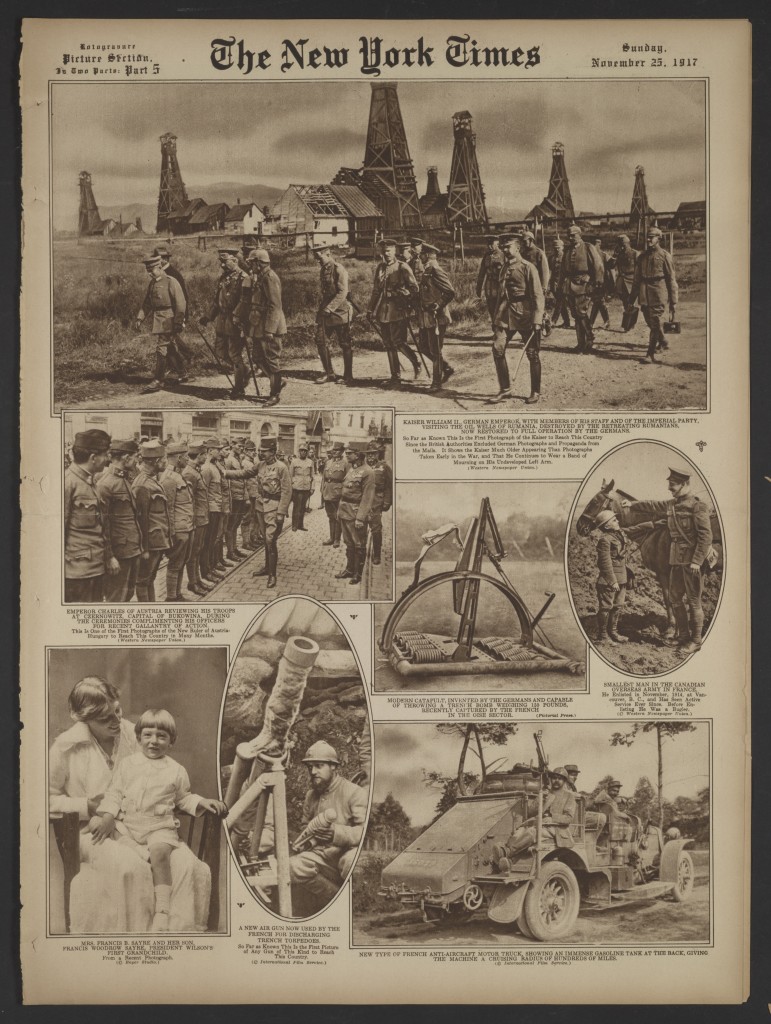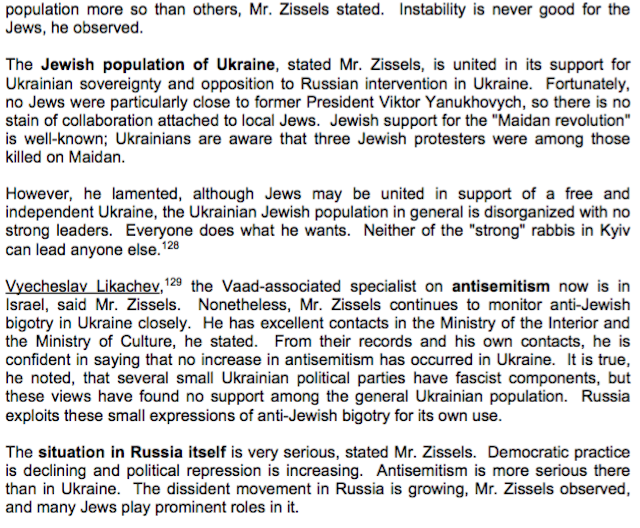 Steve Lasky (Museum of Family History): This one was taken from the Forverts of June 16, 1929. No other information. The photo came from the pictorial page entitled, “Old Beauty and Charm Contest.” The contest was contested by the Forverts. Her name was Sidy Dankner. I wonder whether anyone knows this family…..
Steve Lasky (Museum of Family History): This one was taken from the Forverts of June 16, 1929. No other information. The photo came from the pictorial page entitled, “Old Beauty and Charm Contest.” The contest was contested by the Forverts. Her name was Sidy Dankner. I wonder whether anyone knows this family…..
Donnerstag, 24. März 2016
Sidy Dankner - Another Beauty from Czernowitz?
 Steve Lasky (Museum of Family History): This one was taken from the Forverts of June 16, 1929. No other information. The photo came from the pictorial page entitled, “Old Beauty and Charm Contest.” The contest was contested by the Forverts. Her name was Sidy Dankner. I wonder whether anyone knows this family…..
Steve Lasky (Museum of Family History): This one was taken from the Forverts of June 16, 1929. No other information. The photo came from the pictorial page entitled, “Old Beauty and Charm Contest.” The contest was contested by the Forverts. Her name was Sidy Dankner. I wonder whether anyone knows this family…..
Sonntag, 20. März 2016
Bertha Fogel of Czernowitz
[caption id="attachment_9277" align="aligncenter" width="498"] From the Forverts, New York, N.Y., of September 26, 1926[/caption]
From the Forverts, New York, N.Y., of September 26, 1926[/caption]
Courtesy: Steve Lasky • Museum of Family History
 From the Forverts, New York, N.Y., of September 26, 1926[/caption]
From the Forverts, New York, N.Y., of September 26, 1926[/caption]Courtesy: Steve Lasky • Museum of Family History
Samstag, 19. März 2016
The Liberation of Bukovina - The Capture of Czernowitz (1917)
General Eduard von Böhm-Ermolli at his command post; briefing with Austrian officers at the map table [00:10]; destroyed bridges over the Pruth before Czernowitz [02:11]; Austrian troops bivouac on the banks of the Pruth [03:04]; horsepond [03:49]; Czernowitz after being taken on 3rd August 1917: burning railway station building and burning crossties [04:37]; destroyed dome of the railway station [05:50]; ruins of houses [06:23]; the fire brigade extinguishing flames [07:14]; children in the city streets [07:25]; Austrian troops march past Archduke Franz Joseph on 4th August 1917 in Czernowitz [07:42].
Source: EFG european film gateway & filmportal.de
Dienstag, 15. März 2016
In Search of the Synagogue of Boian in Bukovina

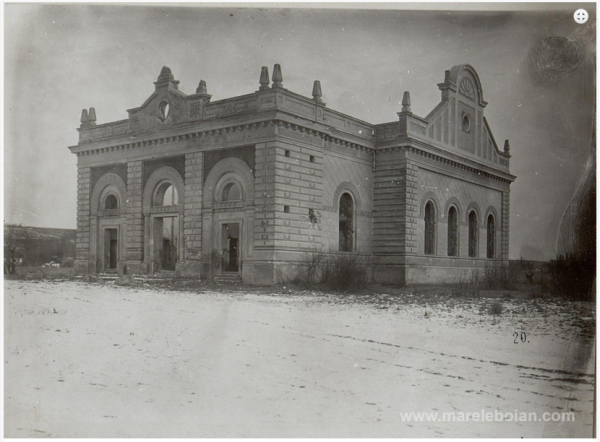

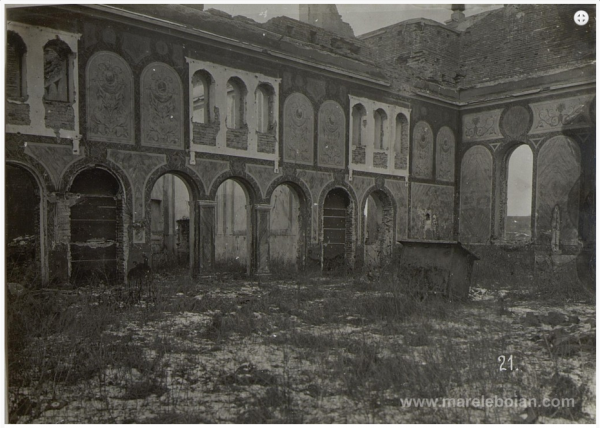
Florin Dyrda from Boian, a graduate of the Chernivtsi National Yuri Fedkovych University both in history as well as in computer systems and networks, is the creator/webmaster for a huge number of websites related to the history of Boian. A couple of days ago Florin drew our attention to his posting (in Romanian laguage) on the former Synagogue of Boian, erected at the end of 19th century and destroyed by the Russian Cossacks during WW1. Florin's fine investigative skills led to this detective work:
http://www.mareleboian.com/lacasuri-sfinte/sinagoga-evreiasca/
In addition a list of Jews from Boian, compiled by Prof. Vasile Bizovi, is available at the site above and can be downloaded by clicking here. No doubt about, Florin's perception of history is from a Romanian angle of view, but his websites focussed on history, churches/synagogies, schools, traditions, today's life, photos, videos and events offer a wealth of material around Boian. Don't miss Florin's links/websites:
Boian Map Room: http://www.mareleboian.com/istorie/imperiul-austro-ungar-1775-1918/harti/
Museum of Boian in Alberta/Canada (English): http://www.boianalbertamuseum.com/
Bukovina Open Air Museum (English): http://bukovina-museum.com/en/
Samstag, 12. März 2016
The Osias "Shike" Stenzler Radautz Booklet
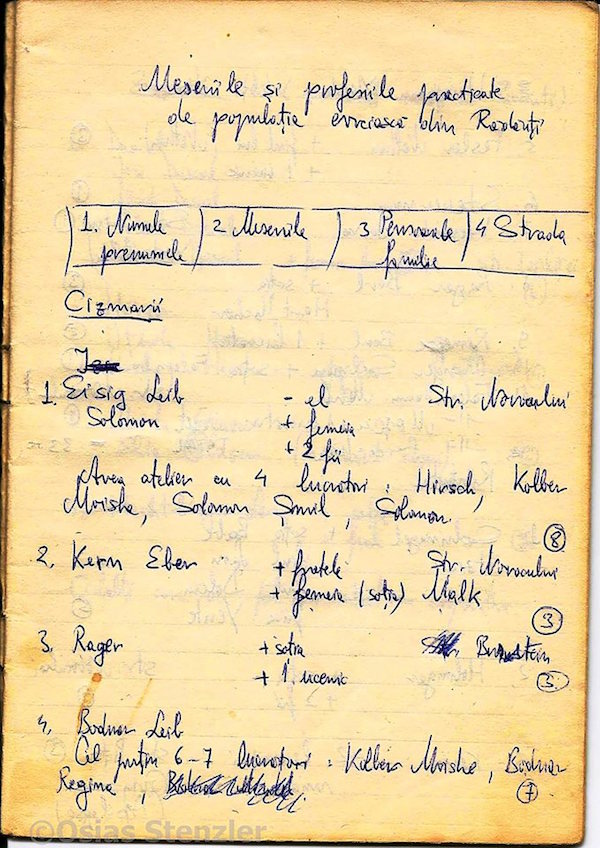
"The Osias 'Shike' Stenzler Radautz Booklet" is a unique document compiled by Osias Stenzler over about three decades until his death in the year 2008 at the age of 99 years. His memory, unlike his eyesight, never faded, even at an advanced age. After the loss of vision, Osias' sons Daniel and Bondy kept his records from dictation and so we have the rare opportunity to discover a real treasure chest making alive the Jewish life in post WW2 Radautz. The booklet is headlined "Occupations and Professions Practiced by the Jewish Population of Radautz", but beyond the long list of names it contains authentic notes and remarks on the Radautz Jewish community.
 Link: http://bondysidi.blogspot.de/
Link: http://bondysidi.blogspot.de/
Donnerstag, 10. März 2016
Montag, 7. März 2016
Meyer Ebner on Leibu Levin - 1935
From Ruth Levin, an article from the “Ost-Yiddishe Zeitung”, 2.6.1935:
“...Dr. Landau introduced to the audience a young man whose name
should not be forgotten. Probably, we’ll hear from him again and again.
Levin isn’t a singer, rather he’s an artistic reader. He’s not a reader, rather
he’s an actor. As a matter of fact he’s all in one: singer, artistic reader, actor
and poet. Why also poet? He reads to us only the poems of others, does he not?
That being so, this is the secret of his art. He reveals what is hidden between the lines.
He brings the poet to completion. He draws from the poet’s soul riches the poet himself
did not know of, riches that were hidden in his sub-conscious...
Frequently the words of the text in his mouth serve solely as a stimulus that awakens –
just for a passing moment – the poetic spiritual inheritance of his own, and that has
always to be born anew, like the music.
The art of Leibu Levin needs not only to be heard, though, but also to be seen. He himself
one has to hear and see, how he breathes into the dim hall, into the pearls of strangers’
poetry, his young burning soul, the creative, sometimes ecstatic, and sometimes weeping
soul... His profound understanding drew one deeply into the fables of
Eliezer Steinbarg and the ballads of Itzik Manger.
From time to time the reader becomes singer, and only when he was seen as well as heard,
did I finally understand the meaning of the old expression “to sing and to say”
regarding troubadours and minnesingers. When his spoken word passes to song, it reminds me
of a flying ship hovering above the earth and taking off to the blue heavens...
Talent is as rare as gold. From the gold it is possible to forge a holiday crown for
priests who serve gods and it is possible to pay with it the penance for sinful impurity...
Talent can be refined to capture surpassing art, or can descend to cheap popular
entertainment. It seems to me that all in Leibu Levin aspires toward and is uplifted to the
shining heights of noble art .”
Dr. Meyer Ebner
The newspaper “Ost-Yiddishe Zeitung”, 2.6.1935

“...Dr. Landau introduced to the audience a young man whose name
should not be forgotten. Probably, we’ll hear from him again and again.
Levin isn’t a singer, rather he’s an artistic reader. He’s not a reader, rather
he’s an actor. As a matter of fact he’s all in one: singer, artistic reader, actor
and poet. Why also poet? He reads to us only the poems of others, does he not?
That being so, this is the secret of his art. He reveals what is hidden between the lines.
He brings the poet to completion. He draws from the poet’s soul riches the poet himself
did not know of, riches that were hidden in his sub-conscious...
Frequently the words of the text in his mouth serve solely as a stimulus that awakens –
just for a passing moment – the poetic spiritual inheritance of his own, and that has
always to be born anew, like the music.
The art of Leibu Levin needs not only to be heard, though, but also to be seen. He himself
one has to hear and see, how he breathes into the dim hall, into the pearls of strangers’
poetry, his young burning soul, the creative, sometimes ecstatic, and sometimes weeping
soul... His profound understanding drew one deeply into the fables of
Eliezer Steinbarg and the ballads of Itzik Manger.
From time to time the reader becomes singer, and only when he was seen as well as heard,
did I finally understand the meaning of the old expression “to sing and to say”
regarding troubadours and minnesingers. When his spoken word passes to song, it reminds me
of a flying ship hovering above the earth and taking off to the blue heavens...
Talent is as rare as gold. From the gold it is possible to forge a holiday crown for
priests who serve gods and it is possible to pay with it the penance for sinful impurity...
Talent can be refined to capture surpassing art, or can descend to cheap popular
entertainment. It seems to me that all in Leibu Levin aspires toward and is uplifted to the
shining heights of noble art .”
Dr. Meyer Ebner
The newspaper “Ost-Yiddishe Zeitung”, 2.6.1935

Sonntag, 6. März 2016
Happy Days of Youth

Czernowitz - In a garden.
Happy days of youth. Unusual "arrangement" and setting - Edy Wagner, head of the Balalaika orchestra, who died too young, top left, my husband's mother Alma Wagner in the middle, on the right her sister Ruzia Wagner with her famous pigtails, the rest are friends. Both Alma and Ruzia, were very gifted, played the guitar and the balalaika, accompanying themselves to a multitude of Yddish songs. Alma had a beautiful voice and had had some lessons with Joseph Schmidt when he was still a cantor. Alma had a great repertoire and sang and played often for her friends. She passed on her singing gift to our daughter Nadine.
Gabriele
Donnerstag, 3. März 2016
Bukovina History Conference - at the Hebrew University of Jerusalem
Thank you Irene Fishler for supplying a Hebrew language brochure (below) describing the conference coming up on March 15, 2016. The organizer's contact information may be found a the bottom of this page:


We are honored to invite you to a convention entitled:
Society and History of Bukovina
The "Multi-Kulti" district of Rumania
on
March 15, 2016
Room 15, Meyersdorf building
Mount Scopus
Jerusalem
9:00-9:30 coming together and refreshments
9:30-10:00 greetings
10:00-11:15 First Session
Bukovina as a Symbol for Multi-Culturalism
Chairman: Professor Daniel Blattman Hebrew University
11:45 - 13:30 Second Session
A Small District - Many Worlds of Multi-Cultural Creativity
Chairman: Dr. Amos Goldberg Hebrew University
Organizer: Dr. Ronit Fischer
Dr. Ronit Fischer
Center for Jewish History


We are honored to invite you to a convention entitled:
Society and History of Bukovina
The "Multi-Kulti" district of Rumania
on
March 15, 2016
Room 15, Meyersdorf building
Mount Scopus
Jerusalem
9:00-9:30 coming together and refreshments
9:30-10:00 greetings
- Professor Uzi Rebhun, Director of the Center for Research on Romanian Jewry
- Mrs. Andreea PăstârnacAmbasador of Rumania in Israel
- Professor Dror Wahrman, Dean of Humanities at the Hebrew University of Jerusalem
- Mr. Micha Harish, Chairman of the AMIR organization.
- Dr. Sa'ar Pauker, representative of the Pauker family.
10:00-11:15 First Session
Bukovina as a Symbol for Multi-Culturalism
Chairman: Professor Daniel Blattman Hebrew University
- The Jews of Bukovina as a symbol for Romanian heterogeneity in the inter-war period
Dr. Ronit Fischer, Hebrew and Haifa Universities. - To describe and imagine Czernowitz - Professor Ya'avetz and his town.
Dr. Rafael Vago, Tel Aviv University - Back to Czernowitz, a paradox of memory and nostalgia - a historic-anthropologic approach.
Dr. Florence Heyman, The French Research Center in Jerusalem. (CNRS-NAE).
11:45 - 13:30 Second Session
A Small District - Many Worlds of Multi-Cultural Creativity
Chairman: Dr. Amos Goldberg Hebrew University
- What happens to the multicultural character of Bukovina after the holocaust? Paul Celan Dan Pagis, and Aharon Appelfeld. Sidra de Koven-Ezrahi, The Hebrew University.
- The Jewish theater of Czernowitz during the transition between Romania and the Soviet Union.
Ms. Dafne Dolinko The Hebrew University and Yad Va'Shem. - "My Bukowiner". The writer Nava Semel returns to the lives of her grand parents and to the place where her family originated.
Organizer: Dr. Ronit Fischer
Abonnieren
Posts (Atom)
